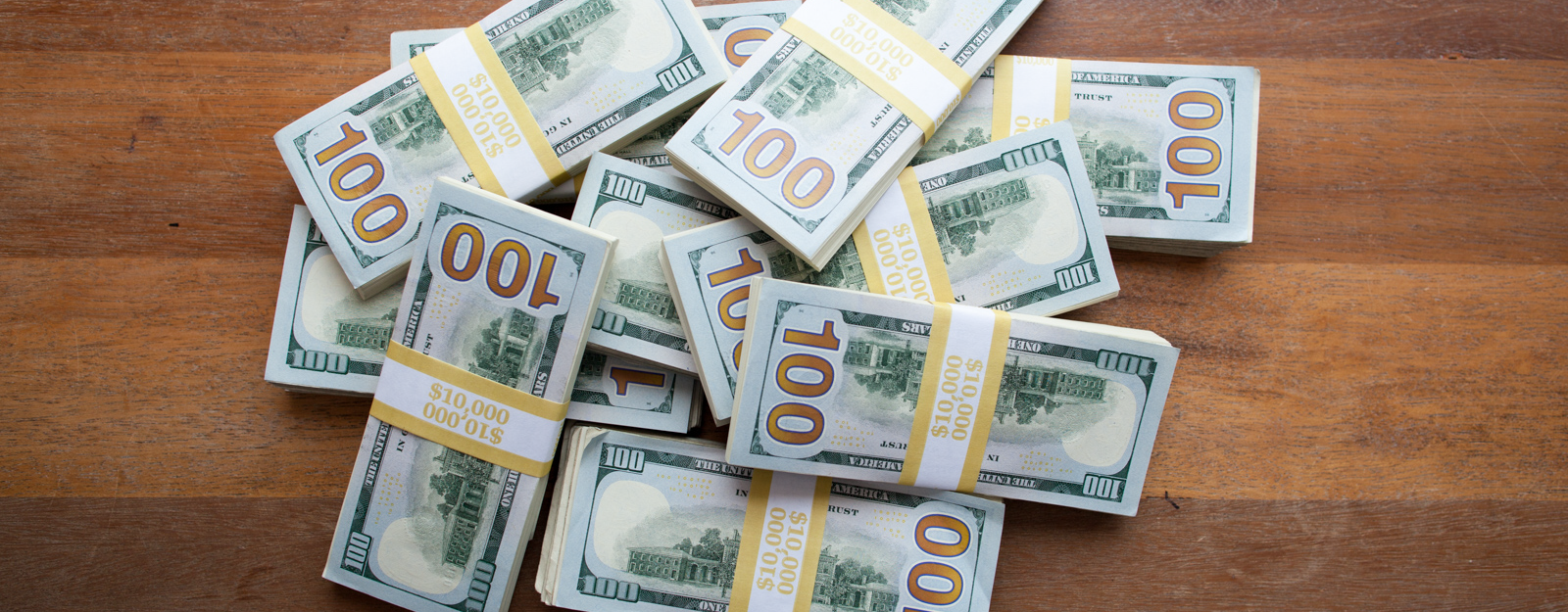
What Does a Bag Designed to Carry $1 Million in Cash Look Like?
And what accessories does it come with?
Traveling through Vietnam in the '90s, I purchased a flight from Da Nang to Saigon that cost me one million VND. That was the first and last time I ever handled a million of anything. For others, however, carrying a million bucks around—USD, no less—is apparently a regular occurrence. As high-end outdoor gear manufacturer SDR Traveller puts it,
In many countries project expenses and payroll for the local crew need to be carried in cash. Whether you're managing a team of thirty working for months at the edge of the grid, or on a solo trip to negotiate a significant cash transaction, the 1M Hauly is designed for discreet, safe carry of up to $1 Million USD in strapped, new or used $100 USD banknotes.
Regarding that last sentence, the wise-ass part of me has to ask, is there any bag that can carry new bills but not used, or vice versa? Seems like a weird feature to brag about. Anyways, let's see what practical design differences there are between the 1M Hauly and a regular duffel bag:
[The 1M Hauly is] designed to address the six main issues with carrying significant volume banknotes in field: risk of discovery; risk of damage (especially in high-humidity, monsoon environments); container robustness; carryability; glide; and in-field accounting.
Overtly sealed pouches attract undue attention at checkpoints, border crossings and airport security. Each pouch is built from…Cuben Fiber…. Despite being four times stronger than Kevlar at about half the weight, the material maintains an innocuous appearance.
 Enter a caption (optional)
Enter a caption (optional)So it seems the bag has been designed to look casual, which doesn't sound like a big deal. The Cuben Fiber appears to contribute the most functionality, in that it's tough, damage-resistant and apparently slippery enough to provide "glide." "Carryability" doesn't seem hard to design for, we've seen plenty of bags that fit the bill, no pun intended.
That leaves us with the "in-field accounting." This comes in the form of an included Accounting Kit, which contains money straps, plastic bags with labels on them, pouches that the plastic bags go into and, amusingly, a Mitsubishi pencil and Sakura marker to write on them both with.
 Enter a caption (optional)
Enter a caption (optional) Enter a caption (optional)
Enter a caption (optional) Enter a caption (optional)
Enter a caption (optional) Enter a caption (optional)
Enter a caption (optional)The Accounting Kit also comes with these barb-like TamperBlock Seals, which are something like fancy zip-ties that have laser-engraved barcodes in them for tracking purposes.
 Enter a caption (optional)
Enter a caption (optional) Enter a caption (optional)
Enter a caption (optional)Then there's the insert to hold the actual cash, called the 1M Hauly Heist:
Made from the same Cuben Fiber as the outer bag, the Heist pouch also contains nickel, copper and silver fabric, specifically designed to block radio frequency signals "to avoid RF tracking." This means if someone's tagged your money, or if you put a phone/laptop/GPS etc. inside the pouch, the lining blocks signals going to and from the device.
 Enter a caption (optional)
Enter a caption (optional)So what does it cost to haul $1,000,000?
 Enter a caption (optional)
Enter a caption (optional)About $720. Happy hauling.
 Enter a caption (optional)
Enter a caption (optional)[Read the Core77 review of SDR Traveller's D3 duffle bag here.]
Via Kottke
-
o2Favorite This
-
Q6Comment
K
{Welcome
Create a Core77 Account
Already have an account? Sign In
By creating a Core77 account you confirm that you accept the Terms of Use
K
Reset Password
Please enter your email and we will send an email to reset your password.


Comments
I think the difference between new and used (and bundled) bills is how much space they take up. A stack of 100 brand-new bills is probably at most half as thick as a stack of used bills. If you're carrying 10,000 Benjamins, that probably matters quite a bit.
You got it! There's even a picture in the link that shows the difference.
very interesting.
I find it funny that among the pictures on their site they have a "wanted for bank heist" bus-stop ad, Tehran, some generic African militia and more...
I'll bookmark that bag in case I need it... one day
Interesting experiment! made me remember this is so conspicuous... nobody will suspect.
This solves my misconception of how big that bag would have to be.... I thought it would be bigger. Certainly not the size of a suit case as I've seen in films.
That las pic looks like he's going to meet some narcos in Sinaloa to pay for a drug shipment! Interesting post, as usual.